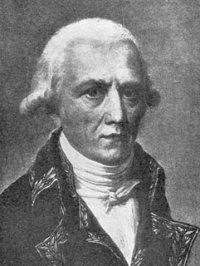| Animals World |
|
|
Jean-Baptiste LamarckBorn: August 1, 1744; Bazentin-le-Petit, Picardy, France Died: December 18, 1829; Paris, France Fields of study: Evolutionary science, invertebrate biology, paleontology, zoology After studying briefly for the priesthood at the Jesuit seminary in Amiens, Jean-Baptiste de Monet, chevalier de Lamarck, served as an army officer in the Seven Years’War. Following an accident in 1768, he began to study botany and medicine. In 1778, he published his three-volume Flore français (French plants), which was widely used as a manual of identification. Lamarck was then employed as assistant botanist at the royal botanical gardens of Paris, and he was also appointed to the prestigious Academy of Sciences. Count Georges-Louis de Buffon engaged him as tutor to his son, which allowed him to tour European botanical gardens for two years. When the Jardin des Plantes (the National Museum of Natural History) was founded in 1793, he was placed in charge of the collection of invertebrates (a term that he coined). During the early nineteenth century, Lamarck published numerous books about invertebrates, paleontology, and biological evolution. His Système des animaux sans vertèbres (1801; system of invertebrate animals) presented a systematic basis for the classification of the lower animals. His Hydrogéologie (1802; Hydrogeology, 1964) interpreted the history of the earth as a series of inundations, each resulting in organic deposits that built up the continents. The book was especially noteworthy for its recognition of the vastness of geologic time. Lamarck was not the first to propose a theory of biological evolution, but his theory was more systematic and coherent than previous versions. He gave the clearest explanation for his theory in Philosophie zoologique (1809; Zoological Philosophy, 1873), presenting a two-part process. First, a change in the environment forced organisms to change their behavior. If particular organs were used, they would increase in size and strength; in contrast, disuse or disease would weaken and shrink organs. Second, Larmark argued that such changes would be inherited, so that the characteristics of a species would change gradually over many generations. Lamarck’s scientific work culminated in an exhaustive study, Histoire naturelle des animaux sans vertèbres (1815-1822; natural history of invertebrate animals). Charles Darwin acknowledged the great contribution of Lamarck’s work, and Darwin’sowntheory of natural selection never entirely rejected the possibility that some acquired traits might be inherited. With advancements in the science of heredity during the twentieth century, the concept of Lamarckian inheritance has been largely abandoned. Late in the twentieth century, nevertheless, Edward J. Steele and other biologists found evidence that the acquired immunities of organisms might be passed on to their offspring. |
|
Copyright 2016 |
|
